So what is the best mulch to use in your flowerbeds and garden? The answer all depends on exactly what you are mulching, and where it will be going.
Mulch really is a gardener’s best friend. There is no better way to keep weeds from becoming established than keeping bare soil covered. Mulch also creates enormous interest and beauty to the overall look of your landscape.
But even more, mulch promotes healthy, strong plant growth. And in a lot more ways than you might think.

The Advantages Of Mulch
Mulch is an incredible soil insulator. It can help to keep the scorching-hot summer sun from overheating the soil. On the flip side, it also retains heat on nights when the thermometer dips too low.
And whether it is vegetable plants, flowers or shrubs and trees, keeping the soil from wild swings in temperature is important. Quick changes in soil temperature damages roots, and can easily injure or even kill plants.
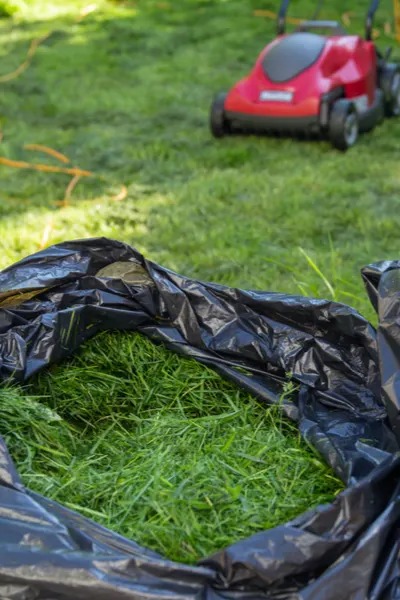
But the benefits of mulch don’t end there. Mulch also helps you water less by protecting the soil from drying out too fast.
And when it rains too hard or too often, that same covering can help to shed off the excess moisture. Last but certainly not least, over time, mulch adds valuable nutrients to the soil as it breaks down.
Selecting The Right Mulch For The Job
It all begins with what you will be mulching. Will it be for flowerbeds, the garden, shrubs and trees, or for a walkway?
The choices are nearly endless, and can actually be somewhat overwhelming. Shredded bark, wood chips, pine chips, cypress, dyed, straw, shredded leaves, rock, and synthetic rubber mulches are just a few. But there are hundreds of other options as well.
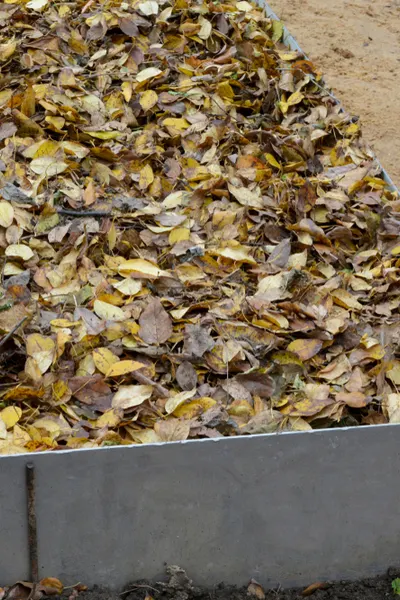
The key to success starts with selecting the best mulch for the application.
Established Perennial / Flower Beds
When it comes to flowerbeds, there are many choices for the home gardener.
Shredded wood based products are by far the most commonly available. They range from finely shredded, to large nuggets and even chunks.
Shredded hardwoods do a nice job of adding back organic material to the soil as they break down.
Be aware that the more finely shredded you choose, the quicker it will disappear. That is not necessarily a bad thing. This will add nutrients to your soil quicker, but you will need to apply it more often.
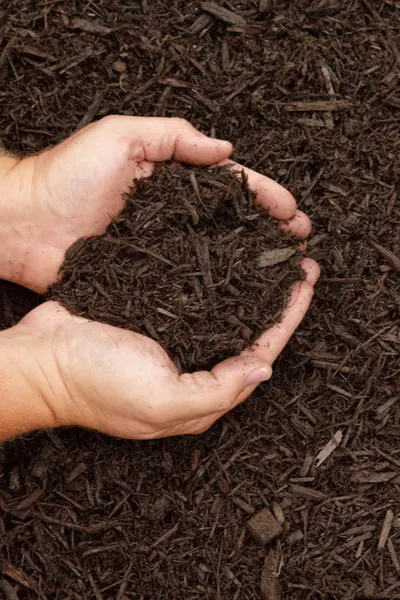
As an alternative, consider using low-growing ground crops as well as a living mulch in these beds. Perennials like Pachysandra, phlox or ground ivy quickly grow a thick living mulch around larger perennials, shrubs and bushes.
Not only do they add interest, but they are an inexpensive, all natural alternative to mulching over and over.
Choosing The Best Mulch In The Garden
When it comes to the garden, organic and natural is the best way to go. Not only are they safe to use around food producing plants, they also enrich your garden soil quickly.
For mulching directly around plants, compost, shredded leaves, grass clippings or straw are all great options.
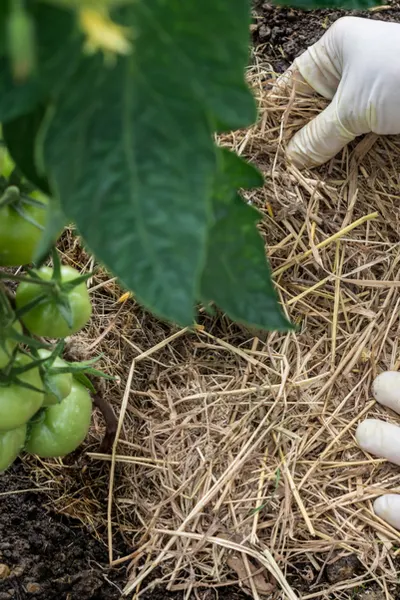
They also break down quickly each season, adding back much-needed nutrients that vegetable plants take from the soil as they grow.
Wood chips and bark products are great for walkways and paths in the garden, but avoid using them directly around vegetable plants. They can do more harm than good when it comes changing the soil PH level in the soil.
Trees / Shrubs
Mulching around trees and shrubs is important for more than just aesthetics. As noted above, mulching also helps regulate soil temperature and moisture levels too. Both of which are those extremely important to the long-term health of trees and shrubs.
Bark, larger-style wood chip products, and even stone or pebbles are great choices for these areas. They provide good insulation and weed suppression qualities, while breaking down slowly over time.
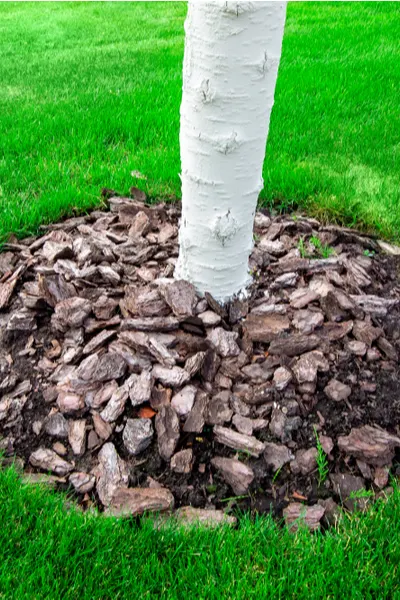
If you use a stone-based product, it’s a good idea to first put down a breathable and permeable weed barrier. Without it, the rocks can work their way into the soil over time. In addition, it can make weeding a nightmare.
Paths & Walkways
When it comes to walkways and pathways, it’s all about choosing low-maintenance mulches. Since there are no issues with trying to create plant or soil vitality, the sky is the limit.
Gravel and stone-based products are among the best. Synthetic rubberized mulches will work here as well, although they can get pricey. (See : How To Keep Driveways & Walkways Weed Free Naturally)
Here again, putting down a barrier underneath is a big key for easy, long-term care.
Here is to choosing the best mulch for your flowerbeds, gardens and landscape this year!

This Is My Garden is a website dedicated to spreading the love and knowledge of gardening around the world. We publish two new garden articles each week. This article may contain affiliate links.
